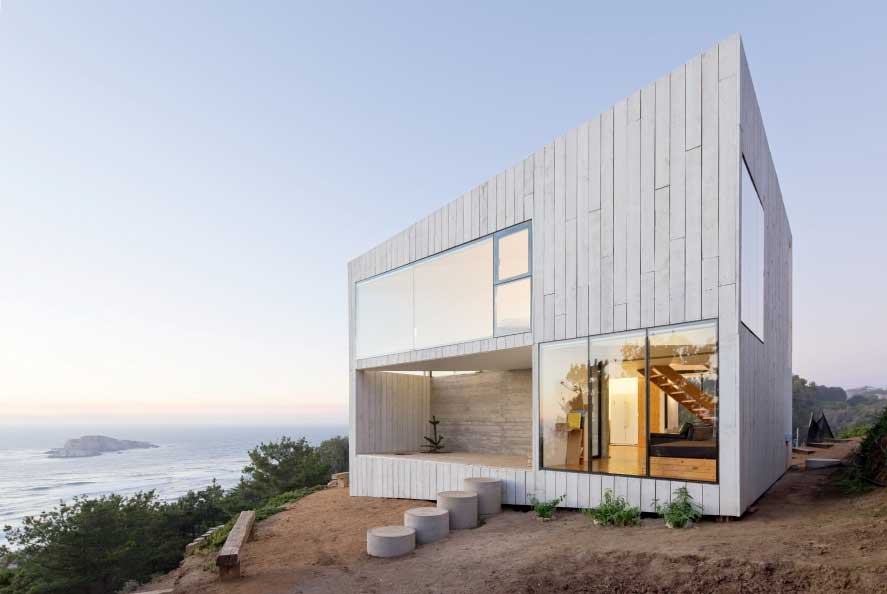Positioning in architecture is more than just placing a structure on a plot of land. It’s an art form that considers the natural landscape, the direction of sunlight, the flow of wind, and the views that surround a location. In contemporary coastal homes, positioning becomes even more critical, as the proximity to the ocean offers unique opportunities and challenges. This article explores the art of positioning in coastal homes, focusing on the use of modern building materials and innovative design techniques to create residences that are not only beautiful but also harmonious with their surroundings.



Embracing the Coastal Landscape
The coastal landscape is a dynamic and ever-changing canvas. The tides rise and fall, the colors of the sky shift with the time of day, and the sound of waves creates a constant background melody. Designing a home that embraces this landscape requires a deep understanding of the site and a willingness to let nature guide the design.
Modern building materials such as large glass windows allow for unobstructed views of the ocean, creating a seamless connection between indoors and outdoors. The use of natural stone and wood adds texture and warmth, reflecting the colors and patterns of the coastal environment.
Positioning the home to maximize views of key natural features, such as a nearby island or a stretch of sandy beach, can turn ordinary rooms into extraordinary spaces. The orientation of the home also affects how sunlight enters the rooms, creating opportunities for natural lighting and energy efficiency.
In coastal settings, the choice of materials must also consider the harsh marine environment. Salt, wind, and moisture can be damaging, so materials such as stainless steel, treated wood, and specialized coatings are often used to ensure longevity.
Finally, the landscape itself becomes a part of the design. Native plants, natural rock formations, and the contour of the land are integrated into the architecture, creating a home that feels like a natural extension of the coast.




Creating Dynamic Indoor-Outdoor Spaces
One of the joys of coastal living is the ability to enjoy the outdoors year-round. Contemporary coastal homes often feature dynamic indoor-outdoor spaces that blur the line between inside and outside. This is achieved through thoughtful positioning and the use of innovative building materials.
Sliding glass doors and retractable walls allow for easy transition between indoor and outdoor spaces. Outdoor living areas, such as patios and decks, are positioned to capture the best views and provide shelter from prevailing winds.
The use of materials such as weather-resistant decking, outdoor-grade lighting, and durable outdoor furniture ensures that these spaces can be enjoyed in all seasons. The choice of materials also reflects the coastal aesthetic, with colors and textures that complement the natural surroundings.
The positioning also plays a role in creating privacy. By considering the sightlines from neighboring properties and public areas, outdoor spaces can be designed to feel secluded without sacrificing views.
The integration of natural elements, such as water features, fire pits, and gardens, adds to the sensory experience of the outdoor spaces. The sound of water, the warmth of a fire, and the fragrance of blooming flowers create a multisensory experience that enhances the connection to the coastal environment.


Sustainability and Coastal Home Design
Sustainability is a key consideration in contemporary coastal home design. The positioning of the home, the choice of building materials, and the integration of energy-efficient technologies all play a role in creating a home that is environmentally responsible.
Positioning the home to take advantage of passive solar heating and cooling can reduce energy consumption. The use of energy-efficient windows and insulation materials further enhances the home’s energy performance.
Water conservation is also a consideration, especially in areas where freshwater resources are limited. Rainwater harvesting systems, drought-tolerant landscaping, and water-efficient appliances are common features in sustainable coastal homes.
The choice of sustainable building materials, such as reclaimed wood, recycled metal, and low-VOC finishes, reflects a commitment to environmental stewardship. These materials not only reduce the environmental impact of construction but also add character and authenticity to the home’s design.
Finally, the positioning of the home within the larger community is considered. Proximity to amenities, public transportation, and community resources can reduce the need for personal transportation, contributing to a more sustainable lifestyle.



The art of positioning in contemporary coastal homes is a multifaceted and nuanced practice. It requires a deep understanding of the coastal environment, a thoughtful approach to design, and a willingness to embrace the unique opportunities and challenges that come with coastal living. Through the innovative use of modern building materials and a commitment to sustainability, contemporary coastal homes are redefining what it means to live by the sea. They are not just structures; they are living spaces that resonate with the rhythm of the coast, offering a lifestyle that is both luxurious and in harmony with nature.












